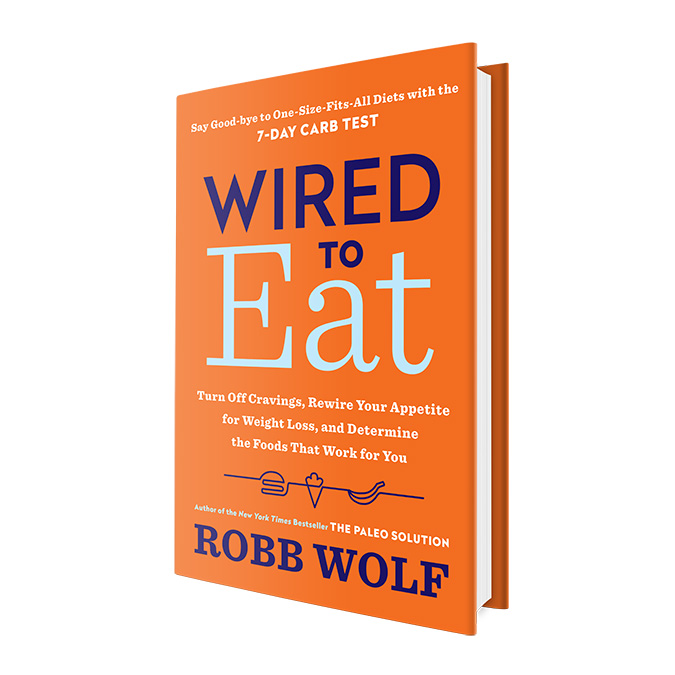Are you looking for that one magical solution to get your body looking the way you’ve always dreamed it could be? Introducing “Macros”: the secret to your weight-loss success. This revolutionary weight-loss plan is the key to unlocking your perfect physique. With the right guidance and the right nutrition, you can achieve the weight loss you’ve been striving for. Leaning into macros is the easiest way to see success with your weight-loss journey. Keep reading to learn more about why this might be the plan for you.
Table of Contents
- 1. Unlock the Secret of Macros: The Key to Your Weight Loss Goals
- 2. Taking Control of Your Diet: How Macros Can Help You Achieve Your Weight Loss Dreams
- 3. Nutrient-Rich Meals: Utilizing Macros to Incorporate Whole Foods into Your Diet
- 4. Meal Planning Made Easy: Discover the Benefits of Controlling Macros for Easy Weight Loss
- 5. Take Charge of Your Body: Unlock the Magic of Macros for Weight Loss Success!
- Question + Answers

1. Unlock the Secret of Macros: The Key to Your Weight Loss Goals
Macros are your ticket to achieving those weight loss goals you set for yourself. To understand their power, you need to think of them as a type of currency: each macronutrient contributes to your overall caloric budget.
Protein: Protein is the powerhouse of the three big macronutrients. It’s critical for building muscle, improving metabolism, and reducing hunger levels. Protein also helps keep you fuller for longer, which reduces the chances of overeating.
Carbohydrates: Complex carbohydrates come from whole grains, legumes, tubers, fruits and vegetables. They are high in fibers, vitamins, minerals, and other essential nutrients. They provide sustained energy to help fuel your fitness activities, and they also taste great!
Fats: Contrary to what many people think, fats are essential for any diet. They provide us with essential fatty acids, and they help us feel satisfied faster. Fats also help us to absorb other vitamins and minerals, and they are even good for our skin.
Keeping the macros in balance is key to getting the most out of them and reaching your weight loss goals. It’s important that you choose & understand the right ratio of proteins, carbohydrates, and fats. Here are some tips to help you get started:
- Choose lean sources of protein such as fish, poultry, and plant-based proteins.
- Select complex carbohydrates such as oats, quinoa, and whole grain pasta.
- Eat healthy fats like avocados, olives, and nuts.
- Eliminate processed and sugary foods.
- Drink plenty of water to stay hydrated.
Eating right is only part of the equation. Incorporating exercise into your lifestyle can also help you reach your weight loss goals. A combination of aerobic and strength training will help you burn fat and build muscle. Try to find an activity you enjoy and make it a part of your weekly routine.

2. Taking Control of Your Diet: How Macros Can Help You Achieve Your Weight Loss Dreams
The idea of macro dieting is simple: track how much protein, carbs, and fat you consume every day, rather than counting calories. This gives you extensive control over your nutrition, and can be an effective tool for achieving your weight goals. Here’s how:
1. Macro Diet Gives You a Precise Nutritional Breakdown
The biggest advantage of macro dieting is that it gives you a precise proportion of macros that works for you. Rather than having to hit a number of calories every day, you can make sure you get the amounts of proteins, carbs, and fats that will fuel your weight loss plan and help you feel satisfied. You’ll find that tracking macros is a much easier and more reliable way to keep your meals health.
2. Extra Flexibility for Cheat Meals
A macro diet also offers more flexibility for indulging in occasional cheat meals. Planning out your macro proportions can help you save up calories during the day so that you can enjoy the snacks and treats you love, without having to worry about blowing your diet.
3. Individualized Target Macro Levels For Your Weight Loss Plan
The best way to optimize your macro dieting is by getting individualized nutritional guidance. Consulting with a nutritionist or dietician will help you determine precisely what macro levels are right for you, as well as what types of activities and exercises might maximize your weight loss. With personalized assistance you can hit the ground running with your macro diet and get the results you desire faster.
4. Intuitive Eating Becomes Easier
Ultimately, macro dieting can help you develop healthy habits and behaviors that you can maintain even after you achieve your weight loss goals. Counting macros encourages intuitive eating, an approach focused on recognizing and responding to the body’s internal cues, signals, and dialog for what it needs and wants in terms of nutrition. As you become more mindful of your choices, and more aware of which foods will give you the nutrients you need, you’ll find it much easier to make healthy choices.
With macro dieting, you can take direct control of your nutrition and reach your weight loss goals. From getting a precise breakdown of your macros to enjoying the newfound flexibility of indulging in occasional cheat meals, you’ll find that macro dieting is the perfect tool for staying on track with your diet.
3. Nutrient-Rich Meals: Utilizing Macros to Incorporate Whole Foods into Your Diet
Macronutrients: The Balance You Need
One of the most important yet overlooked concepts when it comes to healthy eating is macronutrient balance. Macronutrients are proteins, carbohydrates, and fats and they provide our bodies with energy, vitamins, minerals and fiber. To ensure optimal health, it is essential to stay within the boundaries of a reasonable macronutrient balance when picking out food.
Whole Foods Are Key
Oftentimes, when you are striving to get your macronutrient ratios just right, processed foods may seem like the most logical choice. However, the best way to truly make sure you’re being mindful of what you’re putting into your body is to incorporate more whole foods. Whole foods are foods that are kept in their natural state, without added ingredients and substances which can often be hidden in processed meals or snacks.
Nutrient-Rich Meals
So, how do you create nutrient-rich meals? One of the smartest ways is to ensure that your meals include a combination of proteins, carbohydrates, and fats. For protein, incorporate sources such as fish, chicken, egg whites, and some cuts of lean beef. For carbohydrates, opt for quinoa, sweet potatoes, oatmeal, and legumes. For healthy fats, include avocados, flaxseed, almonds, and olive oil in your meals.
Balancing Your Plate
The key to achieving and maintaining a nutrient-rich diet is to make sure you are mindful of the types of foods you are eating and the amount of each macronutrient you are consuming. Most meals should include half a plate of vegetables, one-quarter plate of starches, and one-quarter plate of proteins. Fill your plate with nutrient-rich foods to ensure that you are keeping your macronutrient balance in check.
4. Meal Planning Made Easy: Discover the Benefits of Controlling Macros for Easy Weight Loss
Are you ready to transform your body into a leaner, healthier version of yourself? Controlling macros may be just what you need to reach your weight loss goals. The benefits of meal planning and controlling macros can help make the process of weight loss easier.
Calorie counting has traditionally been the go-to method when it comes to weight loss. However, controlling macros is different. Instead of counting calories, this method focuses on balancing the nutrients in the things you eat. Research suggests that lifestyle factors, such as the types of food you eat, play a key role in successful weight management.
Controlling macros takes Michel Montignac’s concept of “glycemic index” (GI) to the next level. It can help you achieve a balanced daily calorie intake by controlling the ratio of macronutrients (protein, carbohydrates, and fat) you consume. This ensures that your body is getting the correct mixture of these three main macronutrients, which can be an important part of a healthy weight-loss plan.
Meal planning and controlling macros can be advantageous to people who want to lose weight. With this approach, you can create well-balanced meals that contain the right combinations of macronutrients to keep your energy levels stable. Additionally, controlling macros can help you stay full longer, making it easier to resist unhealthy food temptations.
- Balanced meals: Eating a variety of food with balanced macronutrient intake can help you make sure you are getting the nutrition your body needs.
- Reduces temptation: Meal planning and controlling macros can help you resist unhealthy food temptations.
- Glycemic index: Controlling macros can help you avoid high-GI foods to reduce insulin resistance, helping you lose weight more effectively.
- Easier weight loss: Controlling macros can make weight loss a more enjoyable journey as you watch yourself get healthier every day.
It’s easy to see why controlling your macros can be beneficial for weight loss. Not only will your body benefit from eating balanced meals, but it can also make the weight loss process easier and more enjoyable. So, why not try it out and experience the positive effects of meal planning and controlling your macros?
5. Take Charge of Your Body: Unlock the Magic of Macros for Weight Loss Success!
Taking charge of your body is the key to weight loss success. As a dieter, you have undoubtedly heard of counting calories when trying to lose weight. But what if there was a better way? Enter macronutrients. Macronutrients, or “macros,” make up the caloric content of your food and are the building blocks of a healthy diet. Unlocking the magic of macros is the key to unlocking weight loss success.
By understanding macronutrients, you can gain more control over your diet and have a better weight loss experience. Macronutrients are divided into three categories: carbohydrates, protein, and fat. Each of these components provides your body different types of fuel and energy that all need to be present to optimize your health. For weight loss, understanding how much of each ingredient you need can help you achieve your goals.
To start taking charge of your body, first identify the number of calories you need to reach your goal weight. Then, break that number down into grams of fat, protein, and carbohydrates. Here’s a hint: aim for 40% carbohydrates, 30% protein, and 30% fat. It’s also important to consume whole, organic, and nutrient-rich food sources as much as possible. Doing so will ensure that you’re getting quality macronutrients.
Finally, be sure to track your macronutrients by keeping a food diary. It’s important to know not just what you’re eating, but how much. A food diary will help you stay on track and in control of your weight loss experience. You can also use tools or apps to calculate macronutrient percentages, or check nutrition labels which will provide you with the percentages.
- Take charge of your body. Macronutrients can be the key to successful weight loss if you use them wisely.
- Understand the components. Macronutrients are divided into carbohydrates, protein, and fat with individual uses in the body.
- Calculate the percentages. Start by figuring out the number of calories you need and divide that number into grams of fat, protein and carbohydrates.
- Keep track of your intake. Utilize a food diary to monitor the macronutrient intake of each meal.
By gaining control over your body through macronutrients, you will be able to shed pounds and better reach your weight loss goals. Unlock the magic of macros today!
Question + Answers
Q: What are macros?
A: Macros are short for macronutrients. These are the three main nutrients that are essential for optimal health and performance: carbohydrates, proteins, and fats. Together, they provide energy in the form of calories, build and repair body tissues, and help regulate bodily functions.
Q: How do macros help with weight loss?
A: Macronutrients each have distinct roles in helping you reach your weight loss goals. Carbohydrates provide energy, proteins support muscle repair and growth, and fats provide essential fatty acids for brain health. By tracking macronutrients, you can achieve better weight-loss results by understanding how to create the perfect balance of macronutrients that will keep you full and energized while helping you lose weight.
Q: What types of foods contain macros?
A: Different food groups contain different types of macronutrients, so you should aim to include a variety of foods to get the right balance. Foods high in carbohydrates include grains like rice, quinoa, and oats. For proteins, aim for legumes, nuts, and lean meats. Fats are found in oils and oily fish like salmon.
Q: What are the best strategies for tracking my macros?
A: The best strategy for tracking your macros is to create a meal plan that breaks down your meals and snacks into their macro components. Once you have a plan in place, you can use a food tracking app or a calorie calculator to easily track the number of carbs, proteins, and fats you are consuming each day. This will help you stay on track and reach your weight-loss goals.
Now that you know macros are essential for a successful weight loss journey, go ahead and make today the day you start counting your macros! Reaching your weight loss goals is closer than you think. Take control of your nutrition and you’ll see that winning physique you’ve been striving for!
